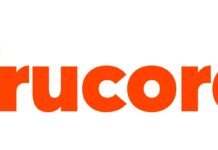SEATTLE, Oct. 12, 2020 /PRNewswire-HISPANIC PR WIRE/ — Remarkable growth this half-decade has boosted the share of Latinxi households in the U.S. that own their home to its highest since the housing bustii. While recent signs are encouraging, a new Zillow® analysis reveals remaining roadblocks on the path to equitable housing.
Latinx Americans are a massive and diverse group, with more than 200 unique ancestriesiii among the 60 millioniv who live in the U.S., and their homeownership gains in recent years have far exceeded those of other groups. About 18% of the U.S. population identifies as Latinxiii, yet they have accounted for more than 60% of new U.S. homeowner gains over the past decadev. That growth has brought the Latinx homeownership rate to 48.9%, the highest level since 2008.
This growth is even more striking when considered in the context of the housing bust during the Great Recession, when Latinx households took a disproportionately large blow. Less than 10% of all U.S. homes are in largely Latinx communities, yet 19.4% of all homes foreclosed upon between 2007 and 2015 were in these neighborhoods. After gains in the 1990s and early 2000s, this contributed to the Latinx homeownership rate falling to 44.1% in 2015 — the lowest since 1998ii.
“While Latinx households have made recent gains in ownership, longstanding inequities in intergenerational wealth and other systemic barriers continue to impede Latinx Americans from reaching parity with the U.S. population as a whole,” says Manny Garcia, population scientist at Zillow. “Latinx home buyers are more likely to face challenges during the process, with financing the purchase often reported as a primary concern. Even within the Latinx community, wealth inequality could help explain the varying homeownership rates of people of different origins.”
Despite recent gains, the Latinx homeownership rate continues to lag more than 10 percentage points behind the rate for Asian, Native, Hawaiian and Pacific Islander households, and nearly 25 percentage points behind non-Latinx white householdsii. A disparity in household wealth is likely a major contributor. The typical Latinx household earns about 75% of the typical white household as of 2018, but that typical white household held more than eight times the amount of overall wealth. That means Latinx households carry a far greater share of their wealth in their homes, adding to the pain caused by the Great Recession.
Those who more recently moved to the U.S. are less likely to own a home — perhaps explaining why the homeownership rate among first-generation Latinx Americans (46%) is lower than among other generations (50%) — as are those coming from less wealthy backgrounds. Latinx Americans of Spanish descent have the highest homeownership rate at 63%, while households headed by someone of Dominican descent have the lowest at 29%iii.
Latinx buyers overall are more likely to be first-time home buyers — 56% report buying their first home, compared to 43% of buyers overallvi. First-time buyers face greater financial hurdles because they don’t have access to equity from a previous home purchase to help with a down payment and almost always (80% of the time) finance their purchase with a mortgage. Latinx buyers are denied by mortgage lenders at a higher-than-average rate and 65% say they are concerned about qualifying for a mortgage at allvi.
To reach homeownership, Latinx buyers more often put other life milestones on hold because of the financial burden. More Latinx buyers than average report that the cost of housing delayed marriage plans (28% said so, versus 18% of all buyers), having children (29% versus 19%) and retiring (26% versus 19%)vi.
|
Latinx Identity* |
Homeownership Rate |
|
Spaniard |
63% |
|
Argentinean |
59% |
|
Other, not specified |
56% |
|
Bolivian |
56% |
|
South American** |
56% |
|
Panamanian |
56% |
|
Chilean |
55% |
|
Cuban |
55% |
|
Peruvian |
52% |
|
Costa Rican |
52% |
|
Colombian |
51% |
|
Uruguayan |
51% |
|
Mexican |
50% |
|
Nicaraguan |
47% |
|
Venezuelan |
46% |
|
Central American** |
45% |
|
Ecuadorian |
43% |
|
Salvadoran |
43% |
|
Paraguayan |
42% |
|
Puerto Rican |
41% |
|
Honduran |
30% |
|
Guatemalan |
30% |
|
Dominican |
29% |
*Source: American Community Survey, 2014-2018
**Survey participants were given the option to select “South American” or “Central American” rather than an individual country
About Zillow
Zillow, the most visited real estate website in the U.S., is building an on-demand real estate experience. Whether selling, buying, renting or financing, customers can turn to Zillow’s businesses to find and get into their next home with speed, certainty and ease.
In addition to for-sale and rental listings, Zillow Offers buys and sells homes directly in dozens of markets across the country, allowing sellers control over their timeline. Zillow Home Loans, our affiliate lender, provides our customers with an easy option to get pre-approved and secure financing for their next home purchase.
Millions of people visit Zillow Group sites every month to start their home search, and now they can rely on Zillow to help them finish it — with the same confidence, ease and empowerment they’ve come to expect from real estate’s most trusted brand.
Zillow is owned and operated by Zillow Group, Inc. (NASDAQ:Z and ZG).
iIn this analysis, “Latinx” refers to people and heads of household that identify with at least one Hispanic, Latino or Spanish origin
iiU.S. Census Bureau, Current Population Survey/Housing Vacancy Survey, April 2020
iiiU.S. Census Bureau, American Community Survey, 2014-2018
ivU.S. Census Bureau, Population and Housing Unit Estimates, 2019
vU.S. Census Bureau, Current Population Survey/Housing Vacancy Survey, February 2019
viZillow Consumer Housing Trends Report, 2020
SOURCE Zillow






